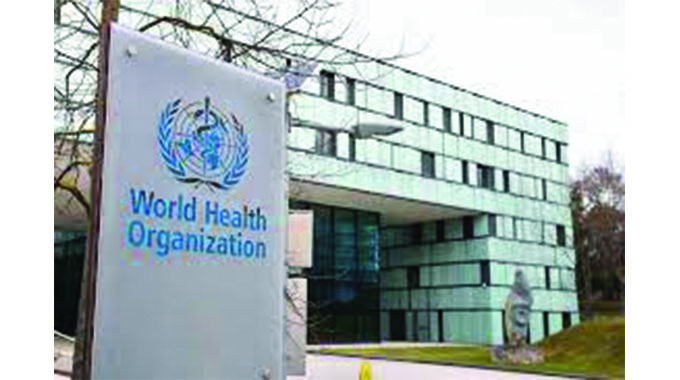PrEP suitable for pregnant women, safe, and effective

Lungelo Ndhlovu
PRE-EXPOSURE prophylaxis (PrEP), an antiretroviral drug used by HIV-negative individuals to lessen their chance of contracting the virus, has been deemed both effective and safe by health experts in Zimbabwe.
Dr Tariro Dianah Chawana Mutingwende, an HIV prevention researcher and expert from the University of Zimbabwe’s Clinical Trials Research Centre, told journalists at a recent Health Journalists Association of Zimbabwe (Hejaz) online scientific café on HIV Reporting that PrEP is an effective method of preventing HIV transmission through unprotected sex.
“Studies have shown PrEP to be both safe and effective in reducing the virus by up to 99 percent. It is also suitable for pregnant women,” she said.
According to Dr Mutingwende, since there is no cure for Aids, the only effective treatment available to suppress the viral load in the human body is antiretroviral therapy (ART).
“If ART is taken as prescribed, the HIV medicine can reduce the amount of HIV in the blood (also called the viral load) to a very low level. This is called viral suppression. If a person’s viral load is so low that a standard lab can’t detect it, this is called having an undetectable viral load.”

HIV attacks cells in the human body that aid in the fight against infection, making a person more susceptible to other infections and diseases. It is spread through contact with a person’s HIV-positive bodily fluids, most commonly during unprotected sex (sex without a condom or HIV medicine to prevent or treat HIV) or through sharing injection drug equipment.
Dr Mutingwende also indicated that extensive research on HIV medication monitoring has been conducted, and that traditional methods included self-reports, pill counts, pharmacy refill records, assessing CD4 counts, and viral loads.
“It is now possible to assess HIV drug levels in hair, red blood cells, breast milk, and urine in a way that is like a pregnancy test thanks to new technology. Another choice is electronic drug monitoring,” she added.
The World Health Organisation (WHO) recommends giving oral PrEP based on Tenofovir Disoproxil Fumarate (TDF) to those who are at high risk of contracting HIV as part of comprehensive prevention, according to Dr Mutingwende.

World Health Organization (WHO)
“Oral PrEP has a good track record of successfully preventing HIV when used as directed. WHO recommended in 2021, that the Dapivirine ring be offered as an additional prevention option for women at high risk of HIV, and this year (2022) that Long-Acting Injectable Cabotegravir (CAB-LA) be offered as an additional prevention option for people at high risk of HIV,” she explained.
The country’s Medicines Control Authority (MCAZ) approved the use of long-acting injectable Cabotegravir for HIV prophylaxis, making Zimbabwe the first country in Africa to announce the regulatory clearance.
According to the facts provided to support the product’s approval, it is secure, efficient, and of high quality. According to Mr Farai Masekela, the MCAZ Head of Evaluations and Registration, the company is certain that the product will be beneficial to individuals who receive it in Zimbabwe.
In 2021, WHO reported that by the end of 2020, 27,5 million people worldwide were receiving antiretroviral therapy, indicating a record increase in the use of antiretroviral therapy (ART), which has saved the lives of tens of millions of people living with HIV/Aids.
“HIV prevention efforts have stalled, and according to WHO, with 1,5 million new HIV infections in 2021 — the same as in 2020. In 2021, there will be 4 000 new HIV infections every day, with key populations (sex workers, men who have sex with men, people who inject drugs, people in prisons, and transgender people) and their sexual partners accounting for 70 percent of global HIV infections.”
The WHO has also warned that HIV drug resistance may jeopardise the effectiveness of antiretroviral drugs in reducing HIV prevalence, illness, and death.
“To combat drug resistance, one must follow the recommended course of action. If you receive drug resistance from someone else, it becomes unfortunate. The best therapy, as we always say, is prevention,” Dr Mutingwende explained.
As of 2018, HIV/Aids-related mortality rates in Zimbabwe continued to fall, as did the number of diagnosed infections.
According to UNAIDS, there has been a 60 percent decrease in Aids-related deaths since 2010, as well as a 24 000 person decrease in new HIV infections. Adult HIV prevalence was 12,9 percent, corresponding to approximately 1,23 million HIV-positive adults in Zimbabwe in 2020.
People with Aids typically live for about three years without HIV medication. Without treatment, someone with a dangerous opportunistic illness has a one-year life expectancy. At this stage of HIV infection, HIV medicine can still help people and may even save their lives. People who begin HIV medication soon after contracting the virus, on the other hand, benefit more which is why HIV testing is so important.
Mojalifa Ndlovu, the programmes manager at the Sexual Rights Centre (SRC), acknowledged the high prevalence rate of HIV virus among key populations in Zimbabwe.
“Men who have sex with men (MSM) and sex workers have historically faced discrimination at public health facilities, which has made it difficult for them to access sexual and reproductive health services,” Ndlovu said, during a recent media sensitisation workshop.











Comments